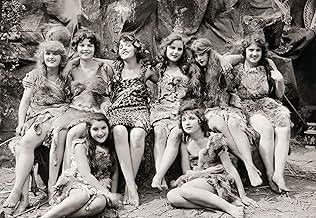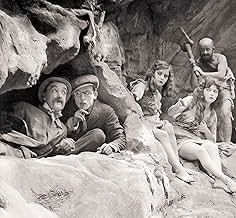Marie Mosquini(1899-1983)
- Actress
Marie Mosquini was a pert, slightly-built comedienne of amazingly
prolific output. Between 1917 and 1926, the feisty brunette appeared in
close to 200 one- and two-reel shorts, mostly for
Hal Roach. She was featured in the
initial series of comedies, which propelled
Stan Laurel to stardom. Following that, she
enjoyed a lengthy run as leading lady to pint-sized Australian comic
'Snub' Pollard, often under the direction
of another noted farceur,
Charley Chase. Marie also
co-starred opposite Will Rogers in
Two Wagons: Both Covered (1924),
a clever send-up of the classic silent western
The Covered Wagon (1923). After
striking up a close friendship with fellow actress
Bebe Daniels, she was regularly featured in
the films of Harold Lloyd, albeit
only in minor supporting roles.
Marie Mosquini was born in Los Angeles in December 1899 and educated at a convent school. She spent three years as a stenographer, before deciding to try her luck in Hollywood. The bulk of her work consisted of short comedies, but there were also a handful of feature films for Paramount and Fox, including a rare dramatic role as Madame Gobin in the classic Janet Gaynor romance 7th Heaven (1927). Marie went into quasi retirement in October 1930 after her marriage to electronics and radio pioneer Lee De Forest, a man 26 years her senior. She became a leading socialite during the 1930's, though continuing to dabble in film acting up to 1938. Seven years after her husband's death in 1961, Marie De Forest became a well-known 'Novice Class' HAM radio operator and member of the Lockheed-affiliated LERC Amateur Radio Club.
Marie Mosquini was born in Los Angeles in December 1899 and educated at a convent school. She spent three years as a stenographer, before deciding to try her luck in Hollywood. The bulk of her work consisted of short comedies, but there were also a handful of feature films for Paramount and Fox, including a rare dramatic role as Madame Gobin in the classic Janet Gaynor romance 7th Heaven (1927). Marie went into quasi retirement in October 1930 after her marriage to electronics and radio pioneer Lee De Forest, a man 26 years her senior. She became a leading socialite during the 1930's, though continuing to dabble in film acting up to 1938. Seven years after her husband's death in 1961, Marie De Forest became a well-known 'Novice Class' HAM radio operator and member of the Lockheed-affiliated LERC Amateur Radio Club.





















